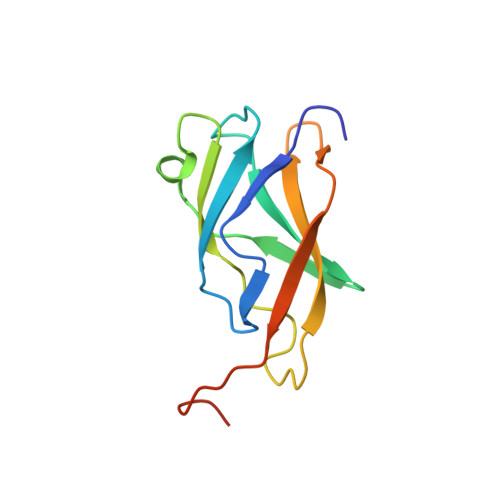Solvent exposed non-contacting amino acids play a critical role in NF-kappaB/I kappaB alpha complex formation
Huxford, T., Mishler, D., Phelps, C.B., Huang, D.-B., Sengchanthalangsy, L.L., Reeves, R., Hughes, C.A., Komives, E.A., Ghosh, G.(2002) J Mol Biology 324: 587-597
- PubMed: 12460563
- DOI: https://doi.org/10.1016/s0022-2836(02)01149-x
- Primary Citation of Related Structures:
1MY5, 1MY7 - PubMed Abstract:
IkappaBalpha inhibits transcription factor NF-kappaB activity by specific binding to NF-kappaB heterodimers composed of p65 and p50 subunits. It binds with slightly lower affinity to p65 homodimers and with significantly lower affinity to homodimers of p50. We have employed a structure-based mutagenesis approach coupled with protein-protein interaction assays to determine the source of this dimer selectivity exhibited by IkappaBalpha. Mutation of amino acid residues in IkappaBalpha that contact NF-kappaB only marginally affects complex binding affinity, indicating a lack of hot spots in NF-kappaB/IkappaBalpha complex formation. Conversion of the weak binding NF-kappaB p50 homodimer into a high affinity binding partner of IkappaBalpha requires transfer of both the NLS polypeptide and amino acid residues Asn202 and Ser203 from the NF-kappaB p65 subunit. Involvement of Asn202 and Ser203 in complex formation is surprising as these amino acid residues occupy solvent exposed positions at a distance of 20A from IkappaBalpha in the crystal structures. However, the same amino acid residue positions have been genetically isolated as determinants of binding specificity in a homologous system in Drosophila. X-ray crystallographic and solvent accessibility experiments suggest that these solvent-exposed amino acid residues contribute to NF-kappaB/IkappaBalpha complex formation by modulating the NF-kappaB p65 subunit NLS polypeptide.
- Department of Chemistry and Biochemistry, University of California at San Diego, Mail Code 0359, 9500 Gilman Drive, La Jolla, CA 92093-0359, USA.
Organizational Affiliation:
















